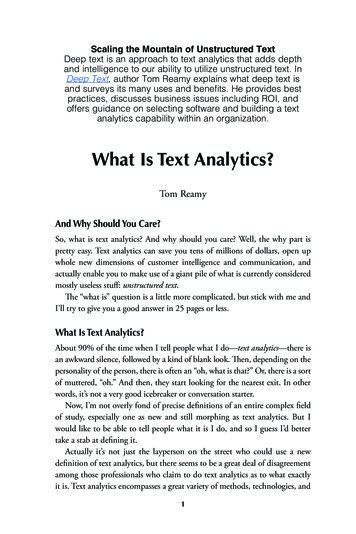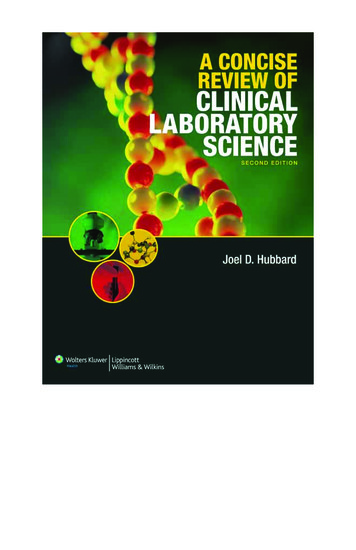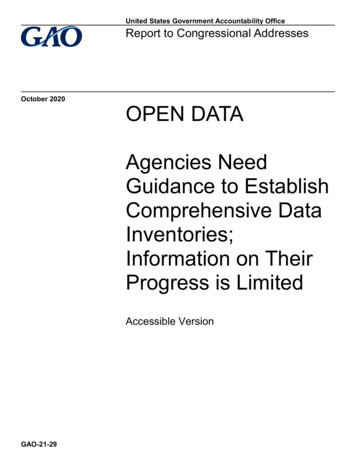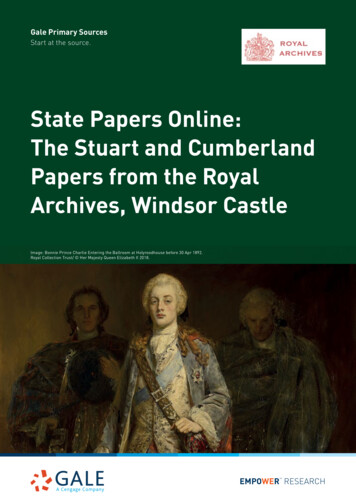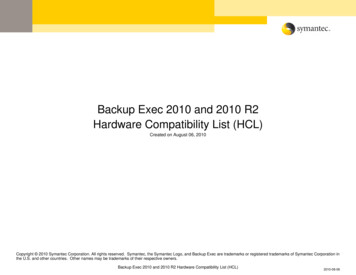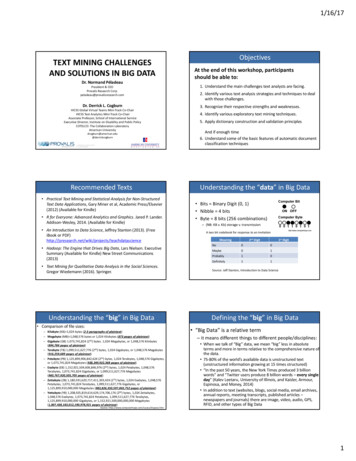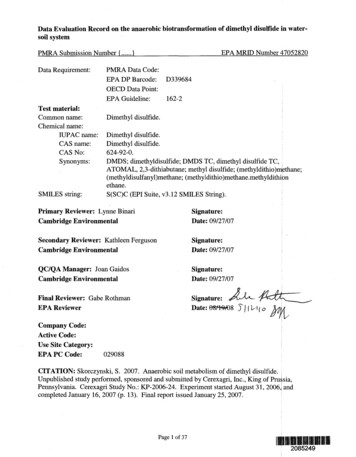
Transcription
Data Evaluation Record on the anaerobic biotransformation of dimethyl disulfide in watersoil systemPMRA Submission Number { .Data Requirement:Test material:Common name:Chemical name:IUPAC name:CAS name:CAS No:Synonyms:SMILES string:EPA MRID Number 47052820PMRA Data Code:EPA DP Barcode: D339684OECD Data Point:EPA Guideline:162-2Dimethyl disulfide.Dimethyl disulfide.Dimethyl disulfide.624-92-0.DMDS; dimethyldisulfide; DMDS TC, dimethyl disulfide TC,ATOMAL, 2,3-dithiabutane; methyl disulfide; ethyldithio)methane.methyldithibnethane.S(SC)C (EPI Suite, v3.12 SMILES String).Primary Reviewer: Lynne BinariCambridge EnvironmentalSignature:Date: 09/27/07Secondary Reviewer: Kathleen FergusonCambridge EnvironmentalSignature:Date: 09/27/07QCIQA Manager: Joan GaidosCambridge EnvironmentalSignature:Date: 09/27/07Final Reviewer: Gabe RothmanEPA ReviewerSignature:Date: XiH9 08Company Code:Active Code:Use Site Category:EPA PC Code:71I L I ( 029088CITATION: Skorczynski, S. 2007. Anaerobic soil metabolism of dimethyl disulfide.Unpublished study performed, sponsored and submitted by Cerexagri, Inc., King of Pru sia,Pennsylvania. Cerexagri Study No.: KP-2006-24. Experiment started August 3 1,2006, andcompleted January 16,2007 (p. 13). Final report issued January 25,2007.Page 1 of 37
.Data Evaluation Record on the anaerobic biotransformation of dimethyl disulfide in watersoil systemPMRA Submission Number I .1EPA MRlD Number 47052820EXECUTIVE SUMMARYThe biotransformation of bi -[meth l- ]-labeleddimethyl disulfide (radiochemical purity96.6%) was studied in deoxygenated, deionized water-sandy loam soil (water not chara kerizedprior to use; soil pH 7.4, organic carbon 0.5%) systems from California for 71 days underanaerobic (static, nitrogen atmosphere) conditions in darkness at 20 C. Based on the witervolume, [14 ]dimethyldisulfide was applied at 280 mg a.i./L. The soi1:water ratio was ca. 1:1.4(ca. 25 g wet wt. soil:35 rnL water). This study was conducted in accordance with OPPTSGuideline 835.3300, Soil Biodegradation, and in compliance with USEPA GLP standards (40CFR, Part 160). The test apparatus consisted of a sealed bottle (250-mL, 120 x 55 mm, beckdiameter 17 mm) containing flooded soil that was kept under a static nitrogen atmospheqe. Soiland nitrogen-sparged water were pre-incubated for several days (interval not specified), \henfollowing treatment, duplicate flasks were collected after 0 (5 min.), 3,7, 14,21 and 71 &aysofincubation. Upon collection, the incubation bottle was attached to a vacuum system and nitrogenwas drawn (100-150 mLIminute, 4 hours) sequentially through the bottle headspace, 1NKOHsolution, a solid-phase carbon trap and, finally, through a second 1N KOH solution. Vo atilescollection was modified for one system at the final (71-day) interval, so that air was drawnthrough the bottle headspace, then sequentially through 1N ECOH solution, a solid-phase carbontrap, a GCRAM oxidative reactor tube and, finally, through a second 1N KOH solutionSelected KOH solutions were pH-neutralized and nitrogen-sparged through atrap. Water layers were decanted and analyzed directly. Soil waswith deionized water, followed by twice with acetonitrile, and, finally, again with water. Thecontents of the solid-phase carbon traps were divided into equal portions and each extra ted twoor three times with hexane. Water layers, soil extracts, extracted soil, incubation bottle inses(methanol), KOH trapping solutions, hexane extracts and extracted solid sorbent were alyzedfor total radioactivity using LSC. Hexane extracts from the solid sorbent were analyzed byGCMS and reverse-phase HPLC, with dimethyl disulfide the only compound detected. Waterlayers, soil extracts and KOH solution (prior to and after neutralization) were analyzedreverse-phase HPLC. Two major transformation products,11tiymethane thiol (MT) andmethanesulfonic acid (MSA),were detected, but identifications were not confirmed. Methane thiol was detected through reoxidation to dimethyl disulfide. No minor nonvolatile products were identified.No determinations, such as redox potentials or dissolved oxygen concentrations, were mlade toverify that anaerobic conditions were achieved and maintainled. Overall recovery of radiolabeled material averaged 87.9 6.8% (range 72.3-97.9%) of theapplied, with no consistent pattern of decline in recoveries over the 71-day study. Follokingapplication of ["c]dimethyl disulfide into the water layer ca. 68% of the applied volatilizedduring the 4-hour purge, while remaining [14 ]residuespartitioned between the water layer andPage 2 of 37
Data Evaluation Record on the anaerobic biotransformation of dimethyl disulfide in watersoil systemPMRA Submission Number { .)EPA MRID Number 47052820sandy loam soil with mean (n 2) distribution ratios (water:soil) of 3: 1 at day 0 (4 hours) and1:1 thereafter.Dimethyl disulfide dissipated from the water-soil system via transformation and diffusibn ofparent. The 4-hour purge (100-150 mLIminute) interval to collect volatiles upon sampli'pgprobably removed most parent present from the test system. Significant levels of parent1dimethyl disulfide were detected in the water layers, but quantitative results were not provided;consequently total levels of parent dimethyl disulfide in the systems and dissipation half-livespresented in this review are underestimated. Volatilized dimethyl disulfide was detecte dat amean 67.5% of the applied at day 0 (4 hours) and was 42.5% (n 1) at study terminatiObserved DT50 values for dissipation (volatilization/transf rmation)of dimethyl disca. 10 days from the total system and 4 hours from the watler layer; a DT50 from the s il couldnot be estimated. Calculated (all intervals) linear (Excel 2000) and nonlinear (Sigmapl t v 9)half-lives for dissipation of dimethyl sulfide from the total system were 79 and 20 days,respectively; low correlation coefficients (r2 0 . 4 0 preclude)any confidence in the results.,"MT and MSA were both detected in 14- and 21-day KOH trapping solutions; only one deplicatesample per interval was analyzed. At 14 and 21 days posttreatment, MT comprised 16.0% and15.8% of the applied, respectively, and MSA comprised 5.4% and 16.2%, respectively. MSAwas also detected in the water layers, but quantitative results were not provided. Unidedtified[14 ]residuesin the water layer decreased from 21.4% of applied (n 2) at day 0 (4 ho rs) to11.0% at 21 days and were 11.9% (n 1) at termination. No transformation products w reidentified in the soil extracts. Extractable soil [14 ]residuesincreased from 6.4% of the 4pplied(n 2) at day 0 (4 hours) to 8.5% at 7 days, then decreased to 3.1% (n 1) at 71 days.Nonextractable [14 ]residuesincreased from 0.1% at day 0 (4 hours) to 5.1% at termination. Amethanol rinse of the incubation bottles recovered 10.7% of the applied at any interval.1,Total radioactivity detected in the KOH solutions increased from 0.7% of applied at day/ 0 (4hours) to 7.3% at 7 days, 25.8% at 14 days, 35.8% at 21 days and was 18.0% at termha*.Analysis of the KOH solutions determined that the trapping solution absorbed volatile[14 ]organics,including MT and MSA, as discussed above, and arent dimethyl disulfide ("earlyintervals", supporting results were not provided), in addition to lgC02. Barium chloride precipitation analysis of 14- and 21-day KOH solutions determined l4c02comprised 1.1-2.6% ofthe applied; no other intervals were analyzed. For the 71-day system, which utilized thdmodified volatiles trapping system (GCLRAM oxidation reactor tube), [14c]methanewaddetected, but only at 1% of applied.Transformation pathways consistent with the products detected in this study were provided bythe study authors. In addition to significant levels of diffusion of parent dimethyl disulfide fromthe water-soil system, the compound was found to degrade tlo methane thiol, methanesullfonicacid, methane and C 0 2 with low levels of formation of bound soil residues.Page 3 of 37
Data Evaluation Record on the anaerobic biotransformation of dimethyl disulfide in watersoil systemPMRA Submission Number { . .1EPA MRID Number 47052820Results Synopsis:Test system used: Deionized water-sandy loam soil from California.ND (not determined).Linear half-life in water:ND .Linear half-life in soil:Linear half-life in the total system: 78.9 days (r2 0.2062) - not definitive.Non-linear half-life in water:ND.Non-linear half-life in soil:ND.Non-linear half-life in total system: 19.6 days (2 0.3926) - not definitive. 4 hours.ND.ca. 10 days.Observed DT50 in water:Observed DT50 in soil:Observed DT50 in total system:Major transformation products:Methane thiol (MT - 16.0 percent of applied detected at Day 14 sample - maximumover allsamples could not be determined).Methanesulfonic acid (MSA - 16.2 percent of applied detected at Day 21 sample- maximumover all samples could not be determined).Minor transformation products:C 0 2 (maximum 2.6% of applied at two intervals analyzed, 14 and 21 days).Methane (1%at sole interval analyzed, 71 days - maximum over all samples could dot bedetermined).Study Acceptability: This study is classified as Supplemental. The following significantdeviations from good scientific practices or Subdivision N guidelines were noted:total levels of parent dimethyl disulfide in the system could not be determined bdcausequantitative results for parent in the water layers were not provided,the pattern of formation and decline of transformation products was not adequatdlyaddressed,material balances were incomplete with up to ca. 28% of the applied unaccountep for,andit was not confirmed that the system was anaerobic at the time of treatment or during thestudy.I. MATERIALS AND METHODSGUIDELINE FOLLOWED:This study was conducted in accordance with OPPTSGuideline 835.3300, Soil Biodegradation (p. 13;p. 48). The following significant deviations from gooPage 4 of 37
Data Evaluation Record on the anaerobic biotransformation of dimethyl disulfide in watersoil systelnPMRA Submission Number { .)EPA MRID Number 47052820scientific practices or the objectives of Subdivision Nguidelines were noted:[ 1 4 ] e s i d uine sthe water layers comprised 10.8-21.6% ofthe applied. Parent dirnethyl disulfide and MSA &eredetected at the 0- and 21-day intervals (only intervalsanalyzed), but quantitative results were not providbd.Consequently, total levels of parent dimethyl disul/fideinthe systems could not be determined and dissipatidn halflives presented in this review are underestimated.In addition to MSA levels in the water layers not ljeingreported and/or quantified at all intervals, only one KOHtrapping solution sample at both the 14- and 21-dayintervals was analyzed for transformation product andboth methane thiol and methanesulfonic acid were found tobe major (210% of applied) products. Therefore, @epattern of formation and decline of the degradates was notestablished.Material balances were incomplete with up to 27.7% of theapplied unaccounted for. The study author attributed lawmaterial balances to volatilization of parent dimetliyldisulfide from the system and formation of methde, whichthe volatiles trapping system was not designed to aollect;however, analysis for [14c]methanein one system at thefinal sampling interval detected the compound at c/nly 1%of applied.IThe test soil was not flooded for 30 days prior to tTeatment,and no determinations, such as redox potentials ordissolved oxygen concentrations, were made to verify thatanaerobic conditions were achieved and maintainek. COMPLIANCE:3This study was conducted in compliance with USEPA GLP Stan ards 40CFR, Part 160 (p. 3). Signed and dated Data Confidentiality, GL , QualityAssurance and Study Authentication statements were provided (ph. 2-5).A. MATERIALS:1. Test MaterialChemical Structure:Description:Purity: Radiochemical purity:bis-[ e t h 14 ]dimethylldisulfide (p. 14).See DER Attachment 2.Technical, in ethanol solution (p. 14).96.6% (p. 14).Page 5 of 37
Data Evaluation Record on the anaerobic biotransforma1;ion of dimethyl disulfide in watersoil systemPMRA Submission Number C .)EPA MRID Number 4705282049520-1-4C (p. 14).Not reported.12.79 mCUmmol(2.667 mCUmL; p. 14; Table 34 p. 30).Reviewer-calculated 0.0205 mCUmmol(0.0043 pCi/mL);0.156 mg/mL [14 ]dimethyldisulfide 97.4 m4mLunlabeled dimethyl disulfide (purity 99.5%, Lot ho.:14514BA; p. 14, Table 3, p. 30).Location of the radiolabel: At each methyl C.Storage conditions of O C in darkness (p. 14; Appendix 1, p. 49).test chemical:Lot/B atch No.Analytical purity:Initial specific activity:Final specific activity:?hvsico-chemical r o e r t iofe sdimethvl disulfide:--ParameterValueMolecular weightMolecular formulaWater solubilityVapor- pressure94.2 glmoleCJ%S?.Comment--AW Absorption1 28.7 mm Hg.At 297.5 nm, molar absorptivity( E ) 37.32 (MI, cm-l).I Not reported.I Not reported.I At 25 C.MRID 470528021IIStability of compound at room temperature3ata obtained from p. 14 of the study report and Appendix 2, p. 29 in MRID 47052802.Page 6 of 37IIII
Data Evaluation Record on the anaerobic biotransformation of dimethyl disulfide in watersoil systemPMRA Submission Number { .)EPA MRID Number 70528202. Water-soil collection, storage and propertiesIIDescriptionWater:Soil:Pesticide use history at the collection siteWater:Collectionprocedures forSoil:Water:Sampling depth forDetailsINot applicable; deionizedl (Milli-Q) water used as test wat&r.IRolinda, California.No pesticides or fertilizer for at least 4 years previous to cqllection.I,Not applicable.Geographic locationI(Soil:- ---II1Not reported.Not applicable.Not reworted.Not applicable.Maintained at ca. 4 O C in unsealed bags prior to use.Not applicable.Water:Soil:Water:Storage length1 3 months.Soil:Notapplicable.Water:Preparation2-mm sieved.Soil:Data obtained from p. 15; Figure 1, p. 35; Appendix 1, p. 52 of the study report.Storage conditionsPropertyTemperature ("C)WHRedox potential (mV)Oxygen concentration (%)Dissolved organic carbon (%)I--Hardness (mg CaC03/L)IIIIIIIIIIDetailsNot applicable as deionized (Milli-Q) water was used as the testwater.Not determined.1INot determined.INot determined.INot determined.IINot determined.Not determined.Electrical conductivity (mmhos/cm)Not determined.Microbial biomass/population (units)Data obtained from p. 15; Figure 1, p. 35 of the study report.Page 7 of 37III1
Data Evaluation Record on the anaerobic biotransformation of dimethyl disulfide in watersoil systemPMRA Submission Number 1. .IPropertySoil texture% Sand (2000-50 km):% Silt (50-2 pm):% Clav ( 2 um):pH (soil:water, 1:1)Organic carbon (%)IOrganic matter (%)CEC (meqI100 g)Redox potential (mV)Moisture at 113 atm (%)EPA MRID Number 470528204Details1Sandy loam.Not reported.Not reported.67.40.50.86.9Not determined.Not reported.I IIIIIData obtained from p. 15; Appendix 1, p. 52 of the study report.1 Percent organic carbon determined by primary reviewer using the following formula: organic carbon (%) organic matter (%)/1.72.2 Although the study protocol specified that microbial biomass was to be determined in the test soil priortotreatment, no results were provided (Appendix 1, p. 52).B. EXPERIMENTAL CONDITIONS:1. Preliminary experiments: Preliminary experiments were conducted and determined that thestandard "flow through" test system would not be suitable (p. 8). This resulted in develdpmentof a test system that would minimize diffusion of dimethyl disulfide.In one of the experimental systems, a static KOH trapping solution was maintained insi e theincubation bottle (p. 21). LSC analysis determined that 16% of the applied radioactivit wasrecovered in the KOH solution after 8 days of incubation, and 85-91% at 16-27 days. S nce,dimethyl disulfide was not expected in the KOH solution, the study author proposed that[14c]methanethiol was being formed; however, methane thiol was known to oxidize to (limethyldisulfide (p. 21). Consequently, an internal KOH trapping solution was not used.9In an additional preliminary experiment, that appeared to utilize the trapping system useg for thedefinitive experiment, [14 ]residuesrecovered in the KOH trapping solution comprised 16.8%and 29.6% of the applied at 14 and 21 days posttreatment, respectively, with 14c02only accounting for 3.0% and 4.6% of the applied, respectively (Table 5, p. 32).2. Experimental conditions:PParameterDuration of the testWater:Details71 days.Page 8 of 37
Data Evaluation Record on the anaerobic biotransformation of dimethyl disulfide in watersoil systemPMRA Submission Number { .)EPA MRID Number 47052820I1ParameterDetails1--Filteredlunfiltered water:1IType and size of filter used, if any:Water:Amount of soil andwater per treatmentSoil:1I1 35 mL (2- to 3-cm layer).Waterlsoil ratioIINominal:Actual:Application rates(mg a.i./L)1(Control conditions, if usedNo. of replicationsvIDeoxygenated (nitrc gen-sparged),deionized ( i l l i - d water)usedIas test water.ca. 25 g wet wt.ca. 1.4:l (35 rnL:ca. 25 E wet wt.).279 mg a.i./L (9.75 mg a.i.1system).280 mg a.i./L (9.81 mg a.i.135 mL water).No sterile controls were used.1IIII11IiNo sterile controls were used.IDuplicate treated water-soil systems at each collectio? interval.250-mL bottle (120composition not repseptum capTwo-stage SKC Anamg front:50 mg back, 150 mg total sorbent).1N KOH (two traps) to trap C02; the first KOH trapseptum-sealed, 60-mL borosilicate, glass vial)sorbent tube, with a second KOH trap (50 mLwashing bottle) placed after the solid sorbentFigure1. D. 35)."Systems were incubated closed and attached to a volatilestra ing system on collection.Ethanol; final concentration 0.3% based on water volu-ne (100IpL ethanol in 35 mL water).Control, if used:Treated:Test apparatus (type/materiallvolume):Details of traps for C 0 2 and organic volatiles,if any:Ir1 If no traps were used, is the system closed?Identity and concentration of co-solventI Test materialVolume of the testsolution usedltreatment:application method Application method(e.g.: mixedlnot mixed):Any indication of the test material adsorbingto the walls of the test apparatus?1 mass/populationSoil:(units) of treatedITemperature ("C):ExperimentalContinuous darkness1 conditions(YesNo):-- 100 pL.IIITest solution was applied, via glass syringe, "through" the waterlayer across the top of the soil layer.Not indicated.INo sterile controls were used.ITreated systems were not analyzed for biomass.'I1 20 f 2 C.Yes.IAt the time of preparation of the water-soil systems, sob moistureData were obtained from pp. 8-9, 14-16; Tables 1-4, pp. 28-31; Figure 1, p. 35; Appendix 1, pp. 52-53 of h e studyreuort.1 *Althoughthe study protocol specified that microbial biomass was to be determined in treated and untreited soil at,study termination, no results were provided (Appendix 1, p. 52).IIPage 9 of 37
Data Evaluation Record on the anaerobic biotransformation of dimethyl disulfide in watersoil systemPMRA Submission Number { .)EPA MRID Number 470528203. Anaerobic conditions: Soil was transferred to the incubation bottles and the headspa epurged (flow rate not reported) with nitrogen for 30 seconds (p. 15). Deoxygenated (nitdogensparged), deionized (Milli-Q) water was then added over the soil and nitrogen wasthrough the water layer for 30 seconds, with a final purge of the headspace for 10the bottles were sealed and maintained at 20 2EC in darkness for "several" days (interfa1 notspecified) prior to treatment (p. 15; Appendix 1, p. 53). No determinations, such as redoxpotentials or dissolved oxygen concentrations, were made to verify that anaerobic conditionswere achieved and maintained.4. Supplementary experiments: None reported.Page 10 of 37
Data Evaluation Record on the anaerobic biotransformation of dimethyl disulfide in watersoil systemPMRA Submission Number { .)EPA MRlD Number ,470528205. Sampling:Details,0 (5 min.), 3,7, 14,21 and 71 days.Duplicate treated water-soil systems at each interval.Upon sampling, the 1N KOWsolid-phase carbon tKOH volatiles traps were connected to thevia an outlet needle. An inlet needle connected th incubationbottle to a nitrogen gas-filled Atmosbag. The nitrogen gaswas then drawn (100-150 a m i n u t e , 4 hours) thrdugh theincubation bottle and traps via vacuum pump, with1 theAtmosbag re-filled with nitrogen gas as needed.Method of collection of C 0 2 and organic volatilecompounds1ISampling intervalsltimes for:Sterility check, if sterile controls are used:Redox potential, dissolved oxygen, pH:No sterile controls were used.Not measured.,Water layer and soil were separated and soil extrabted theSample storage before analysisday of collection. Any storage of water layer and/c/r soilextracts prior to ainalysis was not reported.IIOther observations, if anyNone.IIData were obtained from pp. 15-17; Table 4, p. 31; Figure 1, p. 35 of the study report.1IC. ANALYTICAL METHODS:Separation of the soil and water: Duplicate aliquots (volume not reported) of the watdr layerwere taken and analyzed for total radioactivity by LSC prior to decanting from the soil (Ipp.1718). Duplicate aliquots (volume not reported) of the 0- and 21-day water layers were adalyzeddirectly by HPLC as described below (pp. 17, 20).k'Extraction/clean uplconcentration methods: Soil was transferred to a 250-mL, wide- outhNalgene bottle and sequentially extracted once with deionized water (75 mL), followed y twicewith acetonitrile (50 mL x 2) and a final extraction again with water (50 mL, p. 17). Ea hextraction was done via mechanical shaking (mechanism type not reported) for 15 minutes; afterwhich, soil and extract were separated by centrifugation (3,500 rpm, 10 minutes).aliquots (volume not reported) of each extract were analyzedl for total radioactivity17-18).iIncubation bottle rinse. After removal of the soil, the incubation bottles were rinsed wit methanol (25 rnL) to recover any residual [14 ]residues,with duplicate aliquots (volume1notreported) analyzed for total radioactivity by LSC (p. 17).Total 14cmeasurement: Total 14cresidues were determine,dby summing the concentrdtions ofresidues measured in the water layers, soil extracts, extracted soil, bottle rinse and volatilestrapping materials (Table 4, p. 3 1).Page 11 of 37I
Data Evaluation Record on the anaerobic biotransformation of dimethyl disulfide in watersoil systemPMRA Submission Number 1.IEPA MRID Number 47052820Determination of non-extractable residues: Aliquots (weight, replicates not reported) ofextracted, wet soil were analyzed for total radioactivity by LSC following combustion (pp. 1718).Determination of volatile residues: KOH solutions. Duplicate aliquots (volume not reiported)the KOH trapping solutions were analyzed for total radioactivity by LSC (pp. 17-18). Aliquotsof selected KOH solutions from the "first" trap that preceded the solid-phase carbon trai werealso analyzed by HPLC and GCMS as described below (pp. 18,20; Figure 1, p. 35).Neutralization of KOH solutions. The study author proposed that methane thiol was beingformed and re-oxidized to dimethyl disulfide (p. 21). To recover [14 ]dimethyldisulfidl formedfrom the re-oxidation of [14 ]methanethiol, aliquots of selected KOH solutions were a4usted toneutral pH with HCl, then purged with nitrogen and the released [14 ]residuesdrawn though asolid-phase (CSC) carbon trap. The nitrogen-sparged neutra lizedKOH solution was analyzed byHPLC and the solid sorbent extracted and analyzed as described below.Solid-phase (CSC) carbon trap. The trap was opened and the sorbent divided into two,approximately equal, portions; "front" and "rear" of the trap (p. 16). Each portion was dxtractedtwo to three times with hexane; extraction solvent volumes were 5.0 mL (Table 7, p. 34).Extraction was done via mechanical shaking (mechanism nod specified) for 15 minutes; afterwhich, extract was drawn off via pipette. Duplicate aliquots (volume not reported) of eachextract were analyzed for total radioactivity by LSC, and an aliquot (volume not reported of theinitial hexane extract was analyzed by HPLC and GCMS as described below (pp. 16-17).Aliquots (weight, replicates not reported) of the extracted sorbent were analyzed for totdlradioactivity by LSC following combustion (p. 17).Derivatization method, if used: None was reported.Identification and quantification of parent compound: Aliquots of the 0- and 21-day waterlayer samples, 7-day solid sorbent hexane extract, 21-day KOH trapping solution (trap thatpreceded solid-phase carbon trap), and 14- and 21-day KOH trapping solutions after pHneutralization were analyzed using reverse-phase HPLC under the following conditions: BetasilC-8 column (4.6 x 100 rnrn, 5 pm), column temperature ambient, either isocratic mobile phasecombining 0.1% formic acid in methanol (A) and 0.1% aqueous formic acid (B) at A:B, 70:30(v:v, run time 10 min.) or gradient mobile phase [percent A:B at 0-3 min. 0: 100 (v:v), 518 min.70:30, 10 min. 0:100], injection volume 50-100 pL, flow ratle 1 mllminute, and radioactivitydetector (mechanism type not specified, p. 20). Parent [14c]dimethyldisulfide was bycomparison to the retention time of labeled reference standard (Figures 7-9, pp. 41-43).Aliquots of the 14- and 21-day initial solid sorbent hexane extracts and KOH trapping solutions(same intervals) were analyzed using GCMS under the following conditions: Varian 38b0GCl1200 MS system, Supelco SPB-1 Sulfur column (0.32 lrun x 30 m, 4 p film thicknesg), flowrate 1.2 Wminute, temperature gradient 40-200 C at 4O0C/minute, electron ionization (EI), ionmode positive, electron energy -70 eV, detector and discharge voltage 1,500 V, manifoldPage 12 of 37
Data Evaluation Record on the anaerobic biotransformation of dimethyl disulfide in watersoil systemPMRA Submission Number { .)EPA MRID Number ,47052820temperature 40 C, ion source temperature 150 C, transfer line temperature 200 C, scad modecentroid, scan time 0.25 second (pp. 18-19). Parent [ 1 4 ] d i e t hdisulfideylwas identified bycomparison to the retention time of reference standard (Figures 4-5, pp. 38-39).Identification and quantification of transformation proclucts: Methanesulfonic acid (MSA).MSA was detected and quantified using reverse-phase HPLC as described for the pareqtcompound; however, a chromatogram of reference standard MSA wasFigures 8-9, pp. 42-43). Identification of MSA was confirmed viareported) in 21-day neutralized KOH solution (p. 22; Figure: 10, p. 44).chromato ram of reference standard MSA was not provided, the chromatograms of the21-daysample [I fCIMSA were comparable to chromatograms of reference standard MSA (LCbS-ESI)provided in the dimethyl disulfide aerobic soil metabolism study (Appendix 2, pp. 78-78 inMRID 47052819) submitted concurrently with this study.IMethane thiol (as re-oxidized [14 ]dimethyldisulfide) was detected and quantified via QCMSand HPLC as described for parent compound (pp. 21-22; Figure 4, p. 38; Figures 6-7, pb. 40-41;Figure 9, p. 43).Identification of 14coz. Aliquots (1 mL) of the KOH solutions were combined with 1M bariumchloride solution ( K O H : B C1:1, ,v:v) and refrigerated overnight (p. 18). The sample wereBthen vortexed for ca. 10 seconds, allowed to stand (interval not reported) and centrifugep (3,000rpm, ca. 2 minutes). Total radioactivity in the KOH solutions was determined via LSC rior toand after barium chloride precipitation. The resulting precipitate was also re-suspended in 1NHC1 solution and analyzed by LSC.I?Methane. To determine if methane was present, the volatile trapping system was modified forone of the 71-day water-soil systems in the following manner:the Atmos bag (nitrogen gas) was removed from the incubation bottle inlet,the initial KOH trapping solution of 25 mL in a septum-sealed, 60-mL borosilibate,glass vial was changed to 50 mL in a glass, gas-washing bottle, andfollowing the solid-phase (CSC) carbon trap, headspace gases were passed thro/ugh aGCIRAM oxidation reactor tube (700 C) and a second KOH trapping solutionThis system was designed to trap [14c]methanethiol and l4c02in the initial KOH trappsolution, parent [14 ]dimethyldisulfide on the solid-phase carbon sorbent, then oxidize bny[14c]methaneto 14c02.No reference compounds were reported for identifying transformation products of dimetPlyldisulfide.Detection limits (LOD, LOQ) for the parent compound and transformation produ s:Limits of Detection (LOD) and Quantitation (LOQ) were not reported.Page 13 of 37
Data Evaluation Record on the anaerobic biotransformaltion of dimethyl disulfide in watersoil systemPMRA Submission Number { .)EPA MRID Number 4705282011. RESULTS AND DISCUSSIONA. TEST CONDITIONS: After the initiation of anaerobic conditions (flooding withdeoxygenated, deionized water; static nitrogen atmosphere), the water-soil systems werdincubated for "several" days (interval not specified) prior to treatment. No determinatioljls, suchas redox potentials or dissolved oxygen concentrations, were made to verify that anaero icconditions were achieved and maintained. Additionally, no records were provided to es ablishthat the incubation temperature was maintained at 20 f 2OC throughout the study ( e d1,dp.i x51).1B. MATERIAL BALANCE: Overall recovery of radiolabeled material averaged 87.9 % 6.8%(range 72.3-97.9%, n 11) of the applied, with no consistent pattern of decline in total abpliedradioactivity throughout the incubation (DER Attachment 2, Reviewer's Comment No. 1 ).Fourhours following application of [14 ]dimethyldisulfide into the water layer ca. 67-69% of theapplied had volatilized, while the remaining [14 ]residuespartitioned between the water 'layerand sandy loam soil with mean (n 2) distribution ratios (wz1ter:soil) of 3: 1 at day 0 (4 hours)and 1:1 at 3-7 1 days (DER Attachment 2).Page 14 of 37
Data Evaluation Record on the anaerobic biotran
the water-soil system, the compound was found to degrade tlo methane thiol, methanesullfonic acid, methane and C02 with low levels of formation of bound soil residues. provided; half-lives
